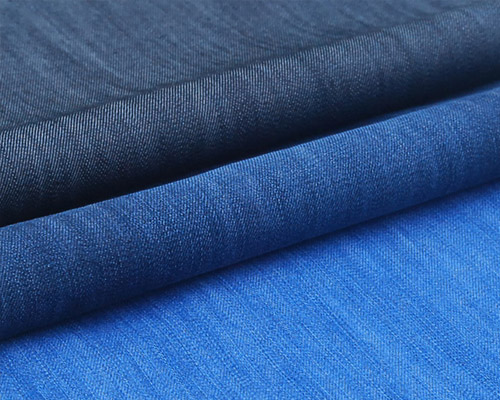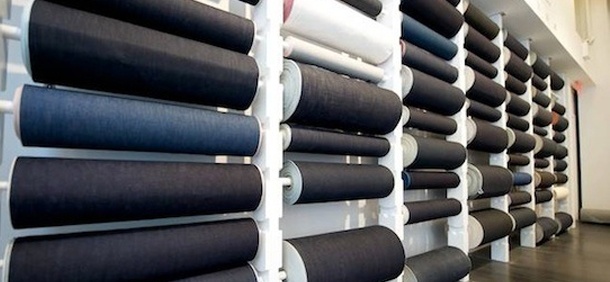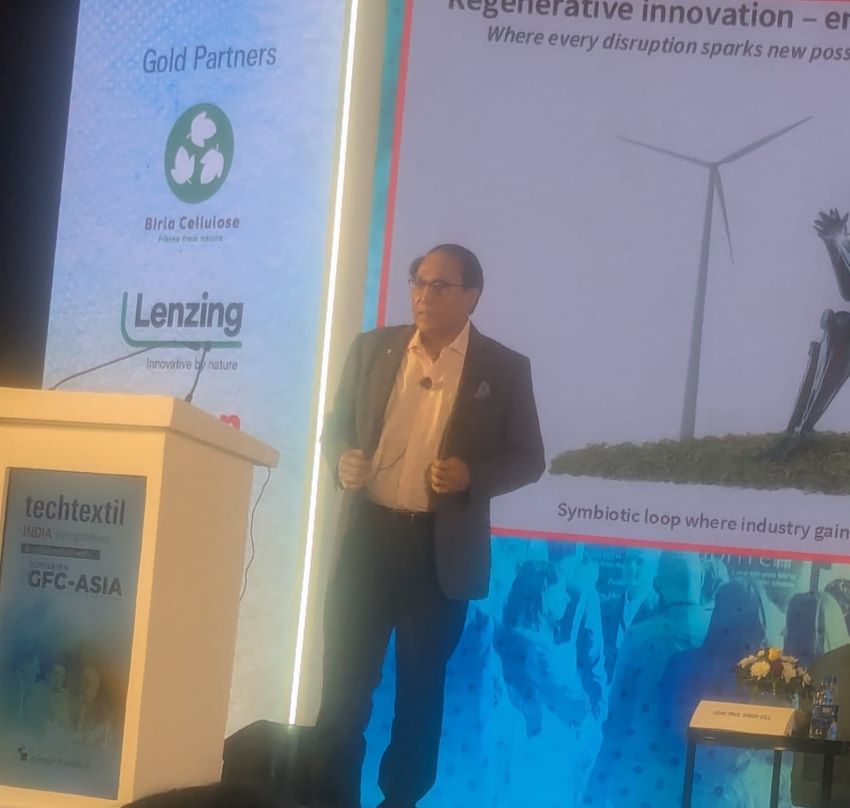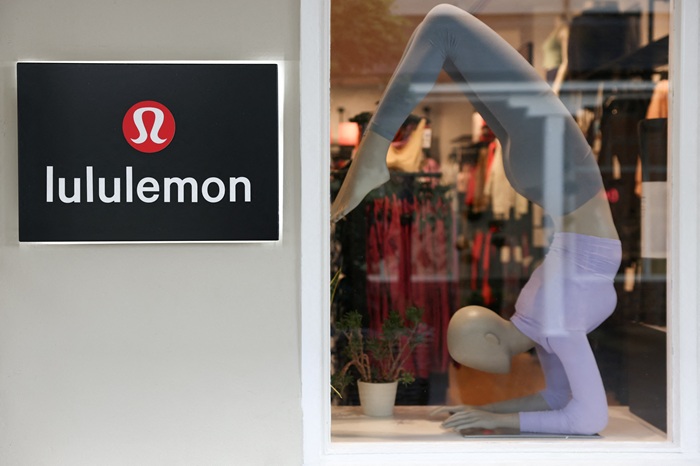FW

Popularity of denim on the rise

By 2020, the global denim jeans market is predicted to reach $ 64.1 billion. The main reason for demand is westernisation and changing lifestyles all over the world. Denim is growing in popularity as business and casual wear. Its always in vogue and available in various colours, styles, cuts, etc. Growth is also influenced by economic, social and demographic trends.
The largest market is Europe. Europe and the US are mature markets and one may expect saturation there, yet they hold major share. Asia-Pacific though, is predicted to be the fastest growing market with a CAGR of 9.4 per cent over the analysis period. Growing disposable incomes, rising number of working women, rapid urbanisation, a western lifestyle along with fashion consciousness, have lead to growth in this region.
Pakistan emerges a key player
As key apparel sectors, denim drives apparel exports. Earlier the US was the prime producer of the fabric. However, now, with countries such as India, Bangladesh, China and Pakistan in the fray, denim no longer remains an American product. Besides, global players in denim are faced with a different market situation today, which doe not allow them to hike consumer prices. Thus, they have to absorb the price increases from denim fabric producers worldwide. In such a scenario, Pakistan has emerged as a major supplier of this highly in-demand fabric, because of the competitive prices and in-house innovations by denim manufacturers in the country.
In less than 10 years, Pakistan has become the denim hub and is considered a leading supplier of quality fabric to the world’s top brands. In Pakistan there are about 40 players in the denim industry. They produce about 50 million sq. mt. of finished denim fabrics monthly. Besides, denim fabric exports are constantly on the rise. India, Colombia, Bangladesh, Egypt, Turkey, Srilanka, and Italy, are major markets for denim fabric exports from Pakistan. India, in particular is becoming a key market. In 2013-14, the quantity was about 7.31 million mt., which may be small, but indicates the potential of the Indian denim market. It looks like it will become more important in the coming years.
Pakistan’s premier industry, textiles, appears to be in trouble, according to a fact-sheet released by the Institute of Policy Reforms (IPR). If corrective measures are not taken by the government by end of August, the Pakistan Textile Mills Association (APTMA) has threatened to go on a strike.
According to the fact-sheet, though the APTMA has had privileged access to the corridors of power and enjoyed special treatment, it has failed to convince the government to take steps to revive the industry. A full-fledged Ministry of Textiles and a Textile Policy has been announced for the period, 2014 to 2019. Yet, the industry appears to be in trouble due to neglect and lack of implementation of the Policy. Over 60 per cent of the output of the textile sector is exported stated.
From 2001-02 to 2010-11, textiles exports recorded a high 10 per cent growth annually. Since then they have stagnated at under $14 billion. Pakistan, since the last four years, has been steadily losing market share to competitors. There are two policy options recommended by the IPR in its fact-sheet. The government should do away with its stubborn policy of maintaining nominal exchange rate and adjust it downwards, at least to the extent of rise in costs due to recent tax moves and pricing of electricity.
However, if the government does not want to do away with its present exchange policy, then it may opt for an export rebate scheme covering most exports, similar to the issuance of scrips in India. Depending on the extent of value-added, the rate could be varied, with the average at 4 percent of the value of exports.
Fabrics from unwanted clothes will be recycled into new ones. The aim is to reduce the environmental impact of fashion industry by limiting waste that goes to landfills and saving on natural resources used in the production of fabric. This initiative is part of the company’s goal of creating a closed loop for fashion.
Swedish company H&M, is presently able to use 20 per cent recycled cotton from collected clothes. It is investing in new technologies to increase this share. It has a target to increase the number of garments made with at least 20 per cent recycled fabric by 300 per cent compared to 2014.
The new range will include denim pieces made from recycled cotton and organic cotton, including three styles of jeans for women, from skinny to distressed girlfriend jeans, plus a denim jacket, flared dungarees and a denim jumpsuit. For men, there is a zip-up denim jacket, alongside two distressed slim leg styles, and a pair of joggers in coated denim.
Since 2013, H&M has collected 14,000 tons of clothing globally through its clothing take-back initiative. The company will launch a new range of 16 denim styles in September which use recycled cotton from textiles collected through its garment take-back initiative.
www.hm.com/
Top textile manufacturing companies are filing applications to secure patents as they look at growing their business overseas amid low consumer sentiment and slow economy. These companies are investing in research and development (R&D) to innovate and grow their business to the next level. Patents assist in providing longevity to their innovations with fakes easily floating in the market affecting companies’ profitability. Welspun India, manufacturer of towels for Wimbledon, for instance, has applied for six patents in Europe, the US, Brazil, China, Korea and Australia for its creations such as natural finish fabric, ergonomics mattress pad and eco-dry towels that use little water during washing.
Welspun has already got patents for Hygrocotton that has a hollow core for fluffiness, temperature control and moisture wicking, from the UK and the US in the past two years. Indo Count Industries too has applied for patents mostly in the US and it has received one patent last year.
Stakeholders have realised that innovation is a key to growth and for that they must invest in R&D. Experts say companies have been trying to create unique products after the abolishment of the global textile quotas in 2005. The government’s technology upgradation fund scheme (TUFS) further helped them focus on installing new technology.
Welspun spent 5.4 per cent of its latest net profit on R&D, while RSWM—a supplier to some of the old established brands such as Raymond, Siyaram, Bombay Rayon, Arvind, Raymond UCO Denim, invested 12 per cent of its latest net profit into R&D.
LA-based brand American Apparel may be filing for bankruptcy within the next 12 months due to lack of liquidity, says statements included in its 2015-second quarter financial results released recently. The brand incurred losses from operations and negative cash flows from operating activities, during the first six months of 2015. The brand has already been working with its advisers and has begun discussions with certain key financial stakeholders to analyse potential strategic and financial alternatives for the future.
The options that the brand may look at are: new capital raising transactions or refinancing. It may also consider amendments to or restructuring of the existing indebtedness and other obligations, and even consider other restructuring and recapitalisation transactions. The results of these discussions are unknown, states the company.
There is quite a bit of uncertainty about the ultimate outcome of discussions. There is no assurance that these efforts would consequently transpire into any transaction or agreement. Also, there is no surety if such a transaction or agreement, if proposed and/or implemented, would be successful.
Besides, irrespective of the fact that such transactions or agreements were implemented or successful, there was a possibility that the brand’s existing and any new investors could suffer substantial or total losses on their investment in their common stock.
The depreciation of Chinese currency has alarmed Bangladesh's garment exporters. China devalued the yuan by about two per cent to support its exporters and increase economic growth. China is Bangladesh’s main competitor for apparel products in the European and US markets. But China has a 37.5 per cent share in the global apparel market while Bangladesh has a 4.85 per cent share.
Bangladesh feels the weakened yuan will give Chinese exporters competitive edge and allow them to sell their products cheaper. Since Chinese exporters get policy support from their government, Bangladesh exporters want the same from their government. Bangladesh exported goods worth $458.12 million to China in 2012-13 fiscal against imports worth $6.30 billion. Bangladesh’s export sector wants a special package to tide over difficulties. The nearly $32 billion export industry in July slumped 11.96 per cent from a year earlier.
While Chinese exporters are favored with a depreciated yuan, Bangladesh’s exporters have to face an appreciated Bangladesh currency against the euro. Exporters in Bangladesh want the government to lower petroleum prices in line with the plummeting oil prices in the international market and not shore up the country’s currency against the US dollar.
Bangladesh's garment exports to Japan rose 14.02 per cent in fiscal 2014-15 partly due to relaxed rules of origin for Bangladeshi knitwear. Knitwear exports in 2014-15 grew 10.43 per cent from the previous year. Relaxation in Japanese rules of origin means exporters will get duty-free access to Japan even if the items are made with imported fabric. Exports of woven garment rose 16.89 per cent.
Rules of origin are a set of conditions that determine the source of a product, and are important in determination of duties and restrictions that often vary according to each product's origin. Before the relaxed rules of origin, Bangladeshi knitwear exporters to Japan could only get duty-free access for items made with locally spun fabric. Bangladeshi exporters were already getting almost zero duty benefit on knitwear exports as local spinners met about 90 per cent of the sector's raw material requirements.
Bangladesh can benefit from Japanese market by promoting non-cotton garments, which have a higher demand in Japan. Since 2008, Japan has moved away from dependence on China. It has induced local retailers to look for other suppliers such as Bangladesh, Vietnam and Cambodia. Even now, Japan’s garment imports mainly come from China. Earlier, Bangladesh was relatively unknown to Japanese customers, but its visibility has increased significantly as Bangladesh opened up to Japan’s outsourcing needs.
Over the year, China will release some 4.6 million bales out of its own cotton reserves this year rather than rely on imports. This is bad news for Pakistan considering the importance of Chinese market for its cotton industry. Cotton and its related exports make up around 16 per cent of the country’s total exports as of financial year 2015. China is the largest market for Pakistan’s cotton exports accounting for about 38 per cent of Pakistan’s total cotton trade and six per cent of total exports.
For the fiscal year ended July 2015, cotton trade with China was down by 15 per cent year-on-year. Lackluster demand from China has often been cited as one of the several factors behind Pakistan’s weak textile industry. China is the world’s foremost consumer of cotton, with an annual consumption of some 34 million bales.
Not only has China been buying less from Pakistan, the cost of production in Pakistan is very high. So, Chinese buyers find prices too high. Moreover, China has recently devalued the yuan to improve exports and, conversely, reduce imports. So, with the yuan-rupee parity much lower than it was before, the year ahead might witness a further decline in Pakistan’s exports to China, not to mention a surge in imports coming in from China.
Coimbatore-based KPR Mill is looking at aggressive expansion with a focus on the garmenting sector. The company, since its inception in 1996, had an integrated facility with combined capacities in spinning, knitting, processing and garmenting. As of now KPR has 10 state-of-the-art production facilities at: Sathyamangalam, Neelambur, Arasur, Karumathampatti, Tirupur and Perundurai in Tamil Nadu. Over the ye ars, its spindleage has increased to 3.54 lakh spindles from 12,000 at the beginning. However, in the last year KPR has stopped expansion in the spinning space and started focusing on garmenting and knitting.
It expanded its Arasur garment facility, upgrading capacity by 10 million pieces with an outlay of Rs 25 crores last year. It also took up greenfield expansion of Thekkalur at an investment of Rs 75 crores and strengthened its garmenting capacity from 37 million pieces a year to 59 million.
The company has been exporting 30 per cent of its products to international markets. Europe is a major market, followed by the US and Australia. It would like to focus more on the US and other markets such as Brazil and Japan going forward. The total garmenting capacity has gone up from 37 million pieces a year to 59 million pieces. KPR also has a 93 MW of green energy of which 63 MW is from the windmills and 30 MW from co-gen, meeting 75 per cent of its power requirements.
KPR’ net profit was up 28 per cent at the end of the first quarter of the fiscal 2015-16 as against the corresponding quarter of the earlier year. Revenues shot up five per cent and garment turnover was up 19 per cent.
www.kprmilllimited.com/
Work attire continues to evolve over the past few decades and casual Fridays have turned into casual every day. Yet, retailers are cautioned by experts that this is not so much about dressing down as dressing comfortably.
Roseanne Morrison, Fashion Director, The Doneger Group says that there has been a big shift. Women wear rompers, short sets, dresses, and skater skirts, which are paired with sneakers. For Fall, they will pick darker, dressy denims. People will pick a flared leg that looks a bit sexier and dressier, so one can be dressy yet comfortable.
Thus, stores have to work harder to provide more khakis for men and dresses for women. Knowing the core customer helps, also the types of type of industries they work in and then provide assortments that reflect those preferences—however, comfort remains at the top.
Tom Julian, men’s Fashion Director, The Doneger Group, says that what used to be casual business has now evolved into ‘creative workplace’. He adds that from speaking to marketing firms and creative tech companies, the biggest change in workplace attire is self-individuality and comfort. Today, millennials do not want to change outfits from work to play to time out. Tailored separates have been accepted by young men and these can be seen in major stores and global chains, Julian states.
According to the ‘Monitor’ survey, while women, for long have been piecing together their wardrobes, the post-recession business environment inspired men to shun their khakis and golf shirts for tailored separates. Today, 66 per cent of both, men and women buy separate pieces from different stores, rather than buy an entire outfit from one place.












